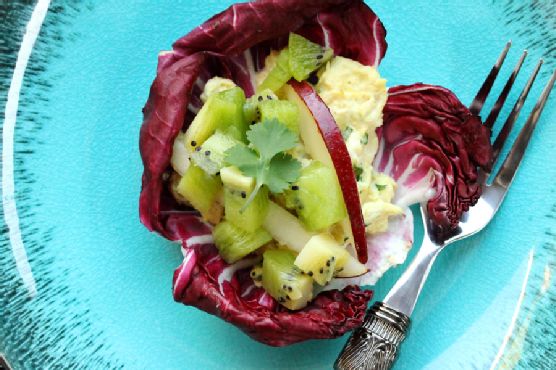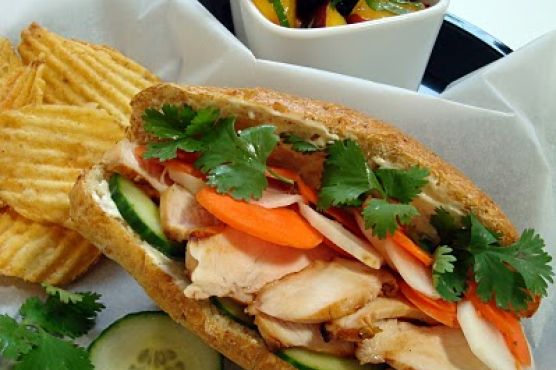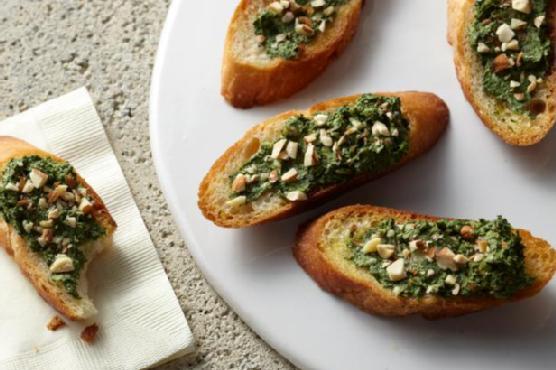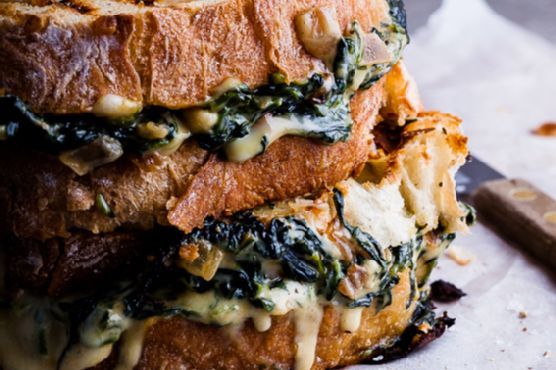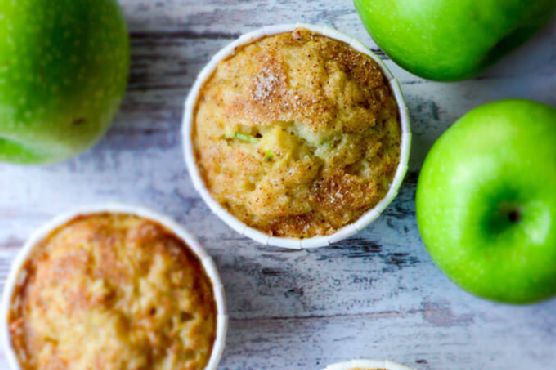Curry Tuna Salad with Radicchio
You can never have too many Indian recipes, so give Curry Tuna Salad with Radicchio a try. Watching your figure? This gluten free, dairy free, whole 30, and pescatarian recipe has 374 calories, 28g of protein, and 19g of fat per serving. This recipe serves 2 and costs $1.74 per serving. A couple people made this recipe, and 42 would say it hit the spot. This recipe from Cuopon Clipping Cook requires radicchio, curry powder, pear, and kiwi fruit. It works well as a rather cheap salad. From preparation to the plate, this recipe takes roughly 45 minutes. With a spoonacular score of 90%, this dish is excellent. Try White Bean and Tuna Salad with Radicchio, Cannellini Bean And Radicchio Salad With Tuna, and White Bean And Tuna Salad With Radicchio And Parsley Vinaigrette for similar recipes.
Servings: 2
Ingredients:
¼ cup chopped Cilantro
¼ teaspoon Curry Powder
3 dashes ground Black Pepper
2 whole Kiwi Fruit
½ of a whole Lemon
2 tablespoons Mayonnaise
½ of a whole Red Pear
6 Radicchio Leaves
1 can Solid White Albacore (7 ounces)
Equipment:
bowl
Cooking instruction summary:
In a medium size bowl, add the tuna, curry powder, mayonnaise, chopped cilantro, and pepper. Mix the ingredients. Try to keep some of the tuna in chunks so that it’s not too mushy. Set aside.Cut the red pear in half and slice some of the pieces in half circles and the other pieces into sticks. Squeeze the lemon juice over the pieces of pear. The lemon juice adds a nice flavor to the pear and should keep the pieces from turning brown. Next, cut the skin off of the kiwi, and cut into small pieces.Peel 6 leaves off of the head of radicchio. Spoon the tuna on to the middle of each radicchio leaf. Then lay the pieces of red pear on top of the tuna.Top with the pieces of kiwi fruit. Garnish with a cilantro leaf. Serve chilled or at room temperature.
Step by step:
1. In a medium size bowl, add the tuna, curry powder, mayonnaise, chopped cilantro, and pepper.
2. Mix the ingredients. Try to keep some of the tuna in chunks so that it’s not too mushy. Set aside.
3. Cut the red pear in half and slice some of the pieces in half circles and the other pieces into sticks. Squeeze the lemon juice over the pieces of pear. The lemon juice adds a nice flavor to the pear and should keep the pieces from turning brown. Next, cut the skin off of the kiwi, and cut into small pieces.Peel 6 leaves off of the head of radicchio. Spoon the tuna on to the middle of each radicchio leaf. Then lay the pieces of red pear on top of the tuna.Top with the pieces of kiwi fruit.
4. Garnish with a cilantro leaf.
5. Serve chilled or at room temperature.
Nutrition Information:
covered percent of daily need
